Introduction
Food poisoning outbreaks in local restaurants are exposed in attention-grabbing newspaper articles. Yet foodborne illness occurs just as often, if not more frequently, at home. The simple cause is that many people do not use safe food handling practices in their own kitchen. Food can become contaminated with illness-causing bacteria during every stage of contact with food. Since older adults are at greatest risk, it is important to practice food safety techniques in our own kitchen.
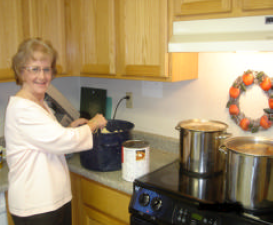
Avoid Cross-Contamination
Cross-contamination most often occurs in the kitchen when microorganisms such as bacteria and viruses are passed from one food to another, from hands, kitchen utensils, equipment, and surfaces. This is particularly true with contact from raw poultry, meat, seafood, and their juices. Improper food handling at home can contaminate food and cause food poisoning. So it is important to take the necessary steps to prevent cross-contamination throughout the kitchen.
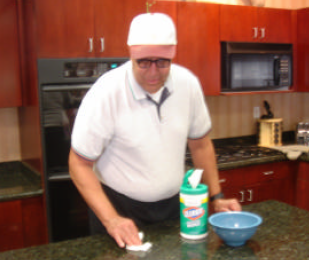
Safe Food Handling
- Wash hands thoroughly for 20 seconds with soap and warm water before, during, and after cooking and eating. Hands should be washed particularly before and after handling foods that are more likely to harbor harmful bacteria, such as raw chicken.
- Foodborne illnesses could be reduced by nearly half if people washed their hands more often when handling foods.
- Keep cooked foods and foods served raw away from utensils, countertops, and equipment used for preparing raw meats and poultry.
- Serve cooked foods on clean plates and with clean utensils only. For example, don’t serve cooked meat on the same plate that held the meat when it was raw or with the fork used while cooking.
Proper Cutting Boards
- Cutting boards should be made of hard wood or plastic, though studies find plastic to be safer. Always discard old cutting boards that have cracks, crevices, or look worn.
- Sanitize cutting boards after every use, especially after contact with raw meat or poultry. Two teaspoons of chlorine bleach to one quart of warm water makes an effective and inexpensive sanitizing cleaner, or boards may be placed in the dishwasher.
- Utilize two clean cutting boards, one for raw meats and the other for fruits and vegetables.
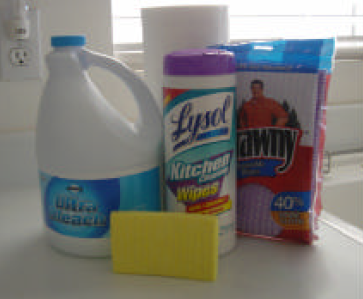
Safe Kitchen Clean-Up
- Wash dishcloths and sponges frequently. The sour smell they sometimes have is caused by bacterial growth. The bacteria in sponges can be reduced by almost 100% by soaking them for 5 minutes in the water/bleach solution described above, heated in the microwave for 1 minute, or tossed into a load of laundry (if you are using hot water).
- Consider using disposable wipes for clean-up or paper towels to dry your hands rather than a kitchen towel, which may harbor harmful bacteria after repeated use.
- Properly disinfect, after each use: kitchen countertops, the sink and drain. Thoroughly clean all utensils, dishware, and other kitchen tools that came into contact with foods.
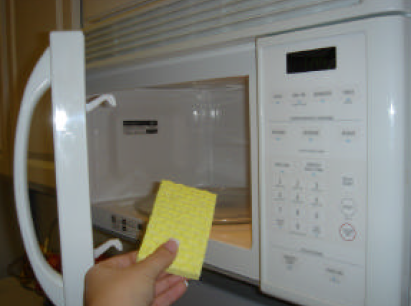
Refrigerator/Freezer Safety
- Keep the refrigerator between 32° F and 40° F and check periodically using a refrigerator thermometer. A temperature over 40° F can cause bacteria to multiply and contaminate food. Keep the freezer at 0° F.
- Put perishable foods away as soon as you get home from the grocery store. If the food has been left out (unrefrigerated) for more than 2 hours, throw it away. If it’s 90° F or higher in the room where the food has been kept, discard after 1 hour.
- Make sure the refrigerator is not packed too full as the cold air must be able to circulate to keep foods safe.
- Raw meat, poultry, and seafood should be kept separate from other foods in the refrigerator and placed so that their juices do not drip onto other foods or surfaces within the refrigerator.
- Secure stored foods by using dishes, containers, and food wraps that avoid spoilage. Spoiled foods that spill can lead to cross-contamination. If a food develops unsafe bacterial growth, this can contaminate other food.
- Clean up spills or food package leakage immediately and disinfect the refrigerator on a regular basis.
Warm water and baking soda can be used to clean the refrigerator. The sodium in the baking soda kills most bacteria that may be growing in food spills. It also helps to remove spots (very mild abrasive) and reduces odors. Vinegar may also be used to eliminate strong odors though it does not kill bacteria. A very mild bleach solution or commercial cleaning product will also work well.
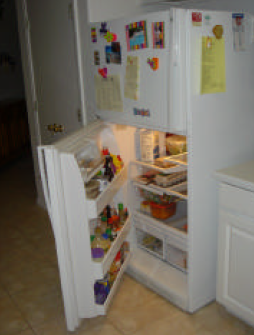
Power Outage
- If the freezer stops working keep the door closed. A full freezer will hold the temperature for approximately 48 hours. You can refreeze meat or poultry that still contains ice crystals.
- If the refrigerator stops working keep the refrigerator door closed to maintain the food at 40° F or lower. This will keep food safely for about 4 hours. Otherwise, cook foods or discard.
- Use a refrigerator thermometer to determine safe food temperatures and “when in doubt, throw it out.”
References
- The American Dietetic Association and ConAgra Foods Foundation Home Safety Website: Food Safety Facts and Figures.
- Environmental Nutrition, July 2004, Volume 27, Number 7, Hillary Wright, M.Ed.RD.
- Food Safety, Preparation, and Storage Tips: Cutting Boards. Material written by Mary Abgrall and Scottie Misner, April 1998, Cooperative Extension, College of Agriculture & Life Sciences, the University of Arizona.
- Seniors CAN Curriculum, 2004 ed. Lesson Handouts FS-2: Food Safety, Part 2.
- USDA, FSIS, Consumer Education and Information, January 1999. Refrigeration and Food Safety. USDA.
- USDA, Jan/Feb 1991; Revised July 2002. The Unwelcome Dinner Guest: Preventing Foodborne Illness. Publication no. FDA 00-2244.
Petermeier, H. and Collins, C.
2006,
Food Safety in the Kitchen,
Extension | University of Nevada, Reno, FS-06-01


